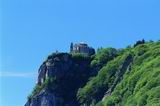| |||||
 |
Orta and its lake | ||||
| The west coast of the lake, more level than the East coast, is characterised by the promontory of Orta, facing the Island of S. Giulio, a dramatically fascinating place. | |||||
| Related images (2) |
|
ORTA Orta is the most suggestive ancient village in the Cusio area. The social and tourist life turns around Mario Motta square. Here, in an almost isolated position, you find 16th century palace Palazzo della Comunità (also known as “Il Palazzotto”), once the seat of the lake authorities “Consiglio della Riviera”, with its wide lower porch supporting the single-hall upper floor. It really is a kind of social meeting point in Orta, from where you enjoy an unforgettable view of the Island of S. Giulio. From the square, you can take a path named after the square flanked by historical houses and frescoed mansions built between the Middle Age and 18th century. At the end of a twisting uphill walk, you arrive at the Parish Church of Our Lady of Assumption (S. Maria Assunta), erected in 1485. The church was originally dedicated to Our Lady of Consolation (Madonna della Consolazione) as a votive offering for the liberation from a plague epidemic. Later on, it was retouched in baroque-rococo taste, with the addition of the sumptuous facade and richly frescoed inside, containing valuable paintings too. From Orta you can walk to Sacro Monte, one of the most important Piedmont shrines, dedicated to St. Francis of Assisi. This is a complex consisting of 21 chapels built in 16th and 17th centuries, where the Saint's life is narrated by means of precious wood statues. Since 1985, this place is part of a natural sanctuary established by the Piedmont Region, also including Mount Mesma and the Buccione's Tower (Riserva naturale speciale del Sacro Monte, Monte Mesma e Torre di Buccione). Mount Mesma represents a perfect place to start excursions through ancient paths surrounded by real peace and beauty. From history and arts point of view, the suggestive, 17th monastery, where the Franciscan friars are still living today, further enriches the park. The Buccione's Tower, of late Roman origin and achieved in 11th and 12th centuries, is all that is left of an ancient fortified complex built of defend the entire region. From this place, you can enjoy an unparalleled view of Cusio and Mount Rosa tops. The Island of San Giulio, right in front of Orta, has always been representing the charming heart of the lake. It features The hamlet of Legro, also known as the “painted village”as the walls of the houses are decorated with frescos which portray scenes of films shot in the Cusio area, is a few kilometres from Orta. Another tourist resort located on the west shore is Pettenasco. In addition to the characteristic historical centre with its old stone arched houses, this village hosts the Wood-Turning Museum /Museo della Tornitura del Lagno) testifying the activity of the so-called “gràta gàmul” (a local idiom expression indicating wood craftsmen). Also, the museum 'Eco Museo Cusius' has its seat in Pettenesco. This agency is meant to co-operate with cultural associations, museums and tourist operators with the aim to safeguard and recover the cultural identity and original landscapes of the region. Several typical small villages, such as Armeno, Miasino, Vacciago, Ameno, and Carcegna, are located across the mountain side, from where you can enjoy panoramic views of both the lake and mountains. The town of Armeno is famous not only for being the birthplace to some among the most appreciated cooks in Italy and abroad, but also for featuring one of the most important religious buildings of the area. This is the St. Mary's church built in the 12th century using stone blocks. One of the most elegant mansion houses of Lake Orta is located in the centre of Miasino. Villa Nigra is built with grand inner arched galleries, granite and wrough iron balustrades and valuable frescoes. The fact the villas like Villa Nigra can be found here testifies the habit of many noble families of Milan who used to reside in the Cusio area for long holiday periods. Always in Miasino, it is worth visitng the Parish Church of San Rocco, rebuilt in 1627, contanining a 17th century marble altar and important paintings and frescoes. In Ameno you can find the Church of Our Lady of Assumption (Santa Maria Assunta), already quoted in documents of 1217, and situated outside the village, and the Shrine of Our Lady of the Bloom (Madonna della Bocciola), erected around the year 1500 with a typically beo-classic layout. For those who love modern art, it is essential to pay a visit to the Fondazione Calderara in Vacciago. Originally built in 17th century, it later became the home-study of the famous painter Antonio Calderara. The artist himself took care of organising an interesting exhibition of statues and paintings from th Fifties and Sixties. Today, a wide collection of his works is on display, together with works by other famous international artists, all being Calderara's friends.
THE WEST SHORE OF LAKE ORTA The greatest town in the Cusio area is Omegna. Starting from 1850, Omegna increasingly developed from an industrial point of view and, consequently, received the name of capital of the “household district”. In fact, some of the leading companies worldwide, such as Alessi, Bialetti, Lagostina, Calderoni, Piazza are based here. In the last years, these companies developed a direct selling system for their products through factory outlets that now range among the significant tourist attractions. Omegna historical centre is represented by the nice square XXIV Aprile, opening toward the lake, and surrounded by mansion houses with porches. Behind the square, there is the old fishermen's village that can be easily identified by the “comb-like” layout of the houses, separated by narrow alleys all oriented towards the lake. The collegiate church of St. Ambrose, originally built in 10th century, with a Romanesque facade and subsequent components of the baroque age, is also a nice place to visit. During the Assumption feast week the city attracts thousands of visitors fro St. Vito's day, with its wonderful fireworks and the charity bazaar.
The first village you encounter is Germagno, rich of ancient houses with arched open galleries, characteristic of Cusio country architecture. Then you reach Loreglia, a foursquared village that still preserves some farmhouses with leftovers of straw roofs. Going north, you arrive at Massiola, a village whose houses are gathered under a “giavina”. This is a huge stone shoring whose rocks are retained to the mountains by means of chains. The municipality of Valstrona admisters several small villages spread on the mountain slopes: Luzzogno, Inuggio, Fornero, Piana di Fornero, Sambughetto, Forno, Piana del Forno, and Campello Monti. They all are typical small villages with narrow twisting alleys among steep stairs carved in the rock. Still today, they are proud to preserve the tradition and culture of this valley. Just as in the past, the fame of their craftsmen skilfully turning and working wood is well alive. They make a wide variety of objects, among which the famous Pinocchio's. The history of this ancient activity is collected and displayed in the local Museum of Craftsmanship (Museo dell'Artigianato) located in Forno. Campello Monti, the last village of the valley and clinging to a steep incline, preserves the signs of the old Walser settlers, who came in from the Valsesia valley. It also offers a good web of mountain paths for those fond of mountain trekking, with dramatic views of the Valsesia valley, Ossola peaks and the chain of Mount Rosa. After leaving Omegna, you immediately enter the valley where the two built-up areas of Quarna Sotto and Quarna Sopra developed. The former has been known for over two centuries for the manufacture of woodwind instruments. The subsequent developments of this technique are shown in the local Museum of the Quarna Story and Musical Instruments (Museo di storia quarnese e degli strumenti musicali). The latter features the fine St. Stephen's church dating back to 16th century and also represents the starting point for outings to the many summer pastures. From Omegna, you can take the provincial road cut into the mountain side; the first village you meet is Nonio, a lovely place of medieval origin, whose stone houses are clear signs of a very ancient sheep-raising tradition. Further on, you reach Cesara, alying on an incline at the foot of Mount Pizzo. Then, turn to the right and climb to Arola, a holiday resort opening up on to a beautiful lake panorama. The municipality of Madonna del Sasso, composed of the country wards of Artò, Centonara, Boleto and Piana dei Monti, takes its name meaning “Our Lady of the Stone” from the imposing sanctuary built on a granite cliff near Boleto between 1730 and 1748. No doubt this is one of the most spectacular holy places of the Cusio area, also for the unforgettable view of the lake available here. Coming back onto the provincial road, you can either go to Pella, a small resort centre facing Orta, or continue to San Maurizio d'Opaglio, an important industrial centre and the faucet world capital. The Town Hall accomodates the Museum of the Faucet (Museo del Rubinetto), illustrating the history of water exploitation, mainly in the household, and the technological and styling development of faucets. Following the coast-road, you then come to Gozzano, historically a major town of the lower shore of the lake. Very close to the village, there is the small church of Madonna di Luzzara, a church plunged in greenery and worth visitng since we have data on it starting from 1114. Downtown Gozzano, visitors will be pleased to visit the parish church of St. Julian with a nice Romanesque bell tower. In the crypt there is the urn with the Saint's body, that was moved here from the nearby church of St. Laurence. This was the first church of Gozzano, built in compliance to the Saint's will.
Texts and images are published with courtesy of Lake Tourist District Scrl - corso Italia 18 Stresa (VB) | |
 |
Search other Guides |
Related arguments
| Antigorio and Formazza Valleys |
| Bognanco, Antrona and Anzasca valleys |
| Borromeo Gulf |
| Divedro Valley |
| Lower Verbano |
| Mergozzo Lake |
| Orta and its lake |
| Ossola Plain |
| The area of Vergante and Mottarone mount |
| Upper Verbano |
| Valgrande Valley |
| Verbania and its environs |
| Vigezzo Valley |

 In the garden
In the gardenThe initiative, which is scheduled to run from June 26th to September 13th, 2020, is inaugurating a temporary space for art in Corso Matteotti 5, in Milan, in the very heart of the city.
 Modigliani and the Montparnasse Adventure
Modigliani and the Montparnasse AdventureOn 22 January 1920 Amedeo Modigliani was taken, unconscious, to the Hôpital de la Charité in Paris and died there two days later at the age of only 36, struck down by the then incurable disease of tubercular meningitis that he had miraculously managed to survive twenty years earlier.
 Madonna di Campiglio - Pinzolo - Val Rendena Travel Guide
Madonna di Campiglio - Pinzolo - Val Rendena Travel GuideThe Brenta Group of the Dolomites and the perennial glaciers distended on the granite peaks of the Adamello and Presanella encase the Rendena Valley, running up to the crowning charm of Madonna di Campiglio.




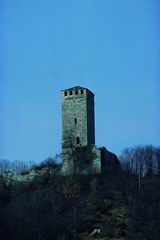 It is criss-crossed by small alleys overlooked by princely palaces in Renaissance/baroque style enlightened by splendid portals, arched galleries, balconies and wrought iron gates. There are also historical buildings erected on medieval foundations that recall the old simple life of fishermen and craftsmen.
It is criss-crossed by small alleys overlooked by princely palaces in Renaissance/baroque style enlightened by splendid portals, arched galleries, balconies and wrought iron gates. There are also historical buildings erected on medieval foundations that recall the old simple life of fishermen and craftsmen.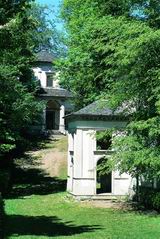
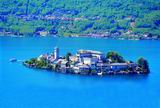 a very ancient church founded by Saint Julius himself in 4th century, subsequently restored in 11th and 12th centuries. In the church you have the chance to admire the black Oira marble ambo carved in 11th century, a true masterpiece of Romanesque art in Italy. Then you can take a walk along the street that makes a loop around the island and actually breathe the island's magic taking look at the beautiful residences built between 16th and 19th centuries.
a very ancient church founded by Saint Julius himself in 4th century, subsequently restored in 11th and 12th centuries. In the church you have the chance to admire the black Oira marble ambo carved in 11th century, a true masterpiece of Romanesque art in Italy. Then you can take a walk along the street that makes a loop around the island and actually breathe the island's magic taking look at the beautiful residences built between 16th and 19th centuries.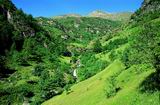 Going deeper into the Val Strona, a winding valley flanked by mountains, you leave the industrialised plain of Omegna and find yourselves in a mountainous woody environment.
Going deeper into the Val Strona, a winding valley flanked by mountains, you leave the industrialised plain of Omegna and find yourselves in a mountainous woody environment.